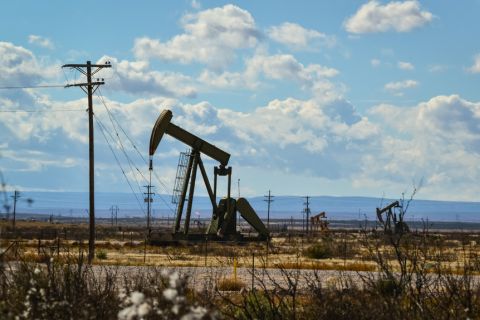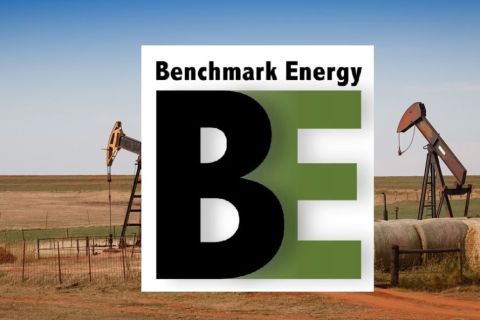“We give a message to clients,” says famed international upstream advisor Martin Lovegrove. “The first is it is easy to make an acquisition. It is more challenging to make a profit. The second is, when we have a client, we like to say we want you to enjoy that deal in three to five years time. We don’t want you to just have an orgasmic experience in the first week and then have you find you’ve overpaid.” Sitting around a large round table in the aftermath of a presentation as the cleaning crew disassembled the room, the tall Brit leaned over to cover the mike of the recorder as he said this, but failed to do so with my ears. Lovegrove was in Houston recently for CERAWeek to give a closed door preview to clients on the upcoming Global Upstream M&A Review published by John S. Herold Inc. A legend with more than 500 deals under his belt, Lovegrove recently sold his firm Harrison, Lovegrove & Co. to Standard Charter Bank. Some of his comments appear in the March issue of A&D Watch. Following are some other insights: Deal values: “Deal prices actually fell last year. They fell in the states and they fell overseas, a large amount overseas. The reason for that was a number of things. Costs have been going up and taxes, so obviously the deal margin will get smaller. Some of the assets have been getting more mature, so their values fall. The market financing was that much more difficult so some of the deals sort of fell away. The MLPs really cratered. They had a bad year. They started out fine, but in the UK they say a week’s a long time in politics. A year is a long time in the oil industry.” Global players: “The Chinese almost disappeared from the scene in terms of buyers. They’re just cautious people. People were expecting them to pay very high prices for a long time. They’re not, they’re smart cookies. They probably did some overpriced deals in 2004 and 2005, but they learned their lesson very quickly. Of nations, they are the ExxonMobil equivalent and they can sail through the world. “The Middle East players—the sovereign wealth funds—are starting to make their presence felt. That was really quite substantial. They’ve certainly made their presence felt. Where they were virtually nowhere two years ago, they crept in in 2006, and came in with a bang in 2007. “This year, if prices become more reasonable, you will see the Chinese and the Indians start coming back into the markets and you will still get the sovereign wealth funds. You will still get quite a lot of activity this coming year.” Credit availability: “It’s a bit like those assumptions the oil companies make. The banks also have to make assumptions. If there’s a bear market in the stock market, banks are more worried about general levels, they will become innately cautious. In relation to the oil and gas sector, they will become cautious in some of their lending. They will just not want to put out money for big deals when they might not get all their money back. “The banks have to take the umbrella view, not just the sectorial view. Will that dry out the money? Not at all. But it will be that much more cautious. If you’re a big company with well-established credit, it almost certainly won’t be a problem, provided you come up with the right deal. If you’re a small new company looking at a very big development and you don’t have a credit history, then the oil companies are a bit like you and me. The banks will say, ‘Well, it’s a bit of a risky project as it relates to you, I don’t think we’ll do it.’” Where in the world? “The U.S. always has the greatest deal flow, of course. Statistically that’s not a surprise. Asia should be pretty active. Africa should be pretty active. Europe probably not so. Latin America wants to be but the way its working probably not so.” Will foreigns keep coming to GOM? “Not really. The foreign companies that have come in have established themselves like StatoilHydro, Petrobrase, Reposol. I think they would probably like to buy more but then they have to start buying out companies because those assets aren’t available and quite often those companies have assets onshore U.S. There is the domestic U.S. oil and gas scene and there is the international scene and really they are fundamentally different in their characteristics. “The deepwater Gulf of Mexico is really an international play—big projects, long lead times, high capital intensity—not the sort of thing where you can make a discovery in West Texas and hook it into a pipeline down the road and get the production going within a month or so. These are long projects, and a lot of the companies coming into the deepwater from overseas have absolutely no interest whatsoever in the shelf or the onshore. “Will they continue to buy assets in the deepwater? Yes they will if they are offered them. Would they buy a company to get a deepwater position? If it wasn’t the tail wagging the dog? Maybe, if the majority of the company was in those assets. If it was a company that had 20% of their value in the deepwater and 80% in the Permian Basin, they wouldn’t have an interest.” Small players: “Small (E&P) companies are like putting seeds on the ground. A large number of them will just never make it. One or two will sprout up and become important companies. Trying to predict that is really quite difficult. Fortune favors the brave, and you also have to look at luck. Occasionally lady luck comes along and presents itself in terms of a really good exploration success and then—bang—you’re there. You’ve catapulted yourself into another league. “If you look at the stock values, small is beautiful in a funny sort of way. It’s easy to go from $10 to $100, or even $1 billion to $2 billion, but when you get to $100 billion, it’s really very difficult to get to $200 billion. It’s not surprising in a good market you see a ramp up in their value at the smaller end. If the market starts to fall, the very small companies tend to fall off most and the rate of decline falls as the size of the company gets bigger.” Deal perspective: “The trouble with deals, to be fair to anyone buying—you tell me what the oil price is going to be in three to five years time. And don’t use the forward market because you get criticized if you actually hedge everything for that period of time. You are going to be taking a lot of risks. With deals, you have to shoot first and work out whether you hit the target later.” Steve Toon, Editor, A&D Watch, Contributing Editor, Oil and Gas Investor, stoon@hartenergy.com
Recommended Reading
Novo II Reloads, Aims for Delaware Deals After $1.5B Exit Last Year
2024-04-24 - After Novo I sold its Delaware Basin position for $1.5 billion last year, Novo Oil & Gas II is reloading with EnCap backing and aiming for more Delaware deals.
Enverus: 1Q Upstream Deals Hit $51B, but Consolidation is Slowing
2024-04-23 - Oil and gas dealmaking continued at a high clip in the first quarter, especially in the Permian Basin. But a thinning list of potential takeout targets, and an invigorated Federal Trade Commission, are chilling the red-hot M&A market.
EIA: Permian, Bakken Associated Gas Growth Pressures NatGas Producers
2024-04-18 - Near-record associated gas volumes from U.S. oil basins continue to put pressure on dry gas producers, which are curtailing output and cutting rigs.
Benchmark Closes Anadarko Deal, Hunts for More M&A
2024-04-17 - Benchmark Energy II closed a $145 million acquisition of western Anadarko Basin assets—and the company is hunting for more low-decline, mature assets to acquire.
‘Monster’ Gas: Aethon’s 16,000-foot Dive in Haynesville West
2024-04-09 - Aethon Energy’s COO described challenges in the far western Haynesville stepout, while other operators opened their books on the latest in the legacy Haynesville at Hart Energy’s DUG GAS+ Conference and Expo in Shreveport, Louisiana.





